Open Journal of Environmental Biology
Analysis of Heavy Metal Concentration of Surface Water Around Gas-flaring Stations in Selected Areas of Delta State, Nigeria
Bardi Juliet I1*, Bawo SS Docas2, Oyedeji Ayodele2, Bardi Stephen I3, Koplamma N Bala1
1Department of Biology and Forensic Science, Admiralty University, Ibusa, Delta State, Nigeria
2Niger-delta University, Amassoma, Bayelsa State, Nigeria
2Federal University of Technology Akure, Ondo state, Nigeria
Cite this as
Bardi JI, Bawo SS Docas, Ayodele O, Bardi Stephen I, Koplamma NB. Analysis of Heavy Metal Concentration of Surface Water Around Gas-flaring Stations in Selected Areas of Delta State, Nigeria. Open J Environ Biol. 2025;10(1):029-036. Available from: 10.17352/ojeb.000048Copyright
© 2025 Bardi JI, et al. This is an open-access article distributed under the terms of the Creative Commons Attribution License, which permits unrestricted use, distribution, and reproduction in any medium, provided the original author and source are credited.Gas flaring is a widespread practice in the Niger Delta region, resulting in the release of toxic gases and heavy metals particulate into the atmosphere. This research investigated the heavy metal concentration in surface water around gas flaring stations in selected areas of Delta state. Locations A, B, C representing Amukpe, Ekpan, Oton where gas flaring activities are still ongoing were selected for this study, while Location D(pontu) is about 6km from the closest gas flare was used as control. Water samples were collected from rivers/streams of study locations at radial distance of 100m from flare points for the analysis. The results showed that copper(Cu) with values ranging from 0.06-0.09mg/L and Zinc(Zn) with values ranging from 0.49-0.62 had higher values at sites A, B, and C compared to control site D . Locations B and C showed the highest copper (Cu) concentrations , Location B had the highest Iron (Fe) concentration while Location A had the highest Zinc concentration when compared with other sample locations. The Physicochemical properties and anion analysis also followed similar pattern with the gas flare impacted location having higher values in some parameters when compared with the control. The levels of heavy metals determined in this study, though were significantly higher (p < 0.05) in gas flaring locations compared to control but were not above the world health organization (WHO) and Nigeria Environmental Standard Regulation Agency (NESREA) standards for drinking water. The results obtained represent a gradual increase in the concentration of heavy metals in the immediate environment of the gas flare impacted water body. It is necessary to monitor water quality parameters including heavy metal concentration in aquatic environments continuously and appropriate measures should be put in place by government and petroleum companies to maintain standards.
Introduction
The extraction of petroleum products from crude oil has been Nigeria's major economic base since the discovery of oil. Petroleum products account for approximately 85% of Nigeria's earnings and 90% of its exports [1]. When oil companies initially began production in Nigeria, the most cost-effective way to separate crude oil from associated natural gas was to burn off the excess gas [2]. This gas is often directed to tall, vertical structures known as gas flares, where it is burned off. This process is called gas flaring [3]. The Niger Delta region is home to both crude oil and natural gas. It includes the states of Ondo, Edo, Delta, Bayelsa, Rivers, Abia, Imo, Akwa Ibom, and Cross River. The region is bordered by the Atlantic Ocean and features watercourses that connect seas and rivers, including the Benue and Niger Rivers. The Niger Delta hosts diverse world’s most significant coastal ecosystems, making it a vital hub for marine food production [4].
Gas flaring is a widespread practice in the Niger Delta region, resulting in the release of harmful and pollutant gases into the atmosphere. Gas is flared for various reasons, including the lack of infrastructure to collect, treat, transport, and utilize the associated gases; the distance from production sites to markets (such as offshore locations); have severe consequences in soil quality and parameters in aquatic environments [5].
The construction of facilities for gas flare recovery is highly expensive, making it seen as an unfeasible and uneconomical investment [6]. Although efforts have been made to capture flared gas, such as the establishment of the Bonny LNG project in 1989 along with other gas gathering initiatives, these measures have largely been ineffective [7].
The negligence and ill handling of operation and bureaucratic challenges, resulted in significant economic losses [1]. This is further supported by data on annual flaring efficiencies of the top eight gas-flaring countries, where Nigeria was found to be the worst performer, while Saudi Arabia consistently outperformed the other countries. This indicates that Saudi Arabia is much more efficient in managing gas flaring through the utilization of associated gas [8].
Conversely, the persistent and uncontrolled flaring of gas, which makes up 75% of the gas produced [7], continues to inflict considerable damage on the local ecosystem and the environment at large. The environmental toll of gas flaring is immense, with harmful consequences for vegetation, aquatic ecosystems, and human health. Consequently, one can anticipate significant co-contamination of nitrates and hydrocarbon pollutants in the soil and water systems of gas-flared regions in the Niger Delta, resulting in negative effects on both the environment and the health of the local population.
Gas flaring releases oxides of carbon, sulfur, and nitrogen, along with water vapor, and both volatile and non-volatile trace metals such as lead (Pb), mercury (Hg), cadmium (Cd), arsenic (As), chromium (Cr), cobalt (Co), zinc (Zn), and nickel (Ni) [9]. These metals, known as trace or heavy metals, are essential for organisms in very small amounts. However, they become toxic at higher concentrations, are non-biodegradable, and can accumulate in the protoplasm of aquatic organisms. Non-essential heavy metals that pose particular concerns to surface water systems include arsenic (As), cadmium (Cd), chromium (Cr), mercury (Hg), lead (Pb), nickel (Ni), silver (Ag), tin (Sn), and uranium (U). It has been noted that elevated manganese concentrations can lead to undesirable and objectionable tastes in surface water when used for drinking purposes [10].
These heavy metals can migrate from the soil to groundwater, where they may be absorbed by plant roots and transported from the roots to the leaves, ultimately being consumed by humans [11]. The aquatic environment is also impacted by gas flaring activities, with studies showing that certain water quality parameters are affected. This study examines the contamination of surface water by heavy metals around gas flaring stations in selected areas of Delta State.
Methodology
This study involved field and laboratory analyses. Samples were collected and analyzed between the periods of November 2023 to February 2024.
Geography of the study area in Nigeria
The study areas are located within the Niger Delta region characterized by a unique combination of marine and continental quaternary deposits. One third of the region is made of wetlands and houses. It is the third-largest wetland forest in the world [12]. Sapele is an area in Delta state located in the Western Niger Delta. It is situated between latitude 50 53’0”N and longitude 50 41’0” E. Some oil and gas companies are located in this city and operate flow stations, have oil rigs and oil pipelines which pass through residential areas. Mangrove swamps, fresh water swamp and coastal plain sands are main constituent of the area. Warri is also a city in Delta State situated along the Warri River, close to the Atlantic Ocean. Warri's geographical position gives it a tropical climate with a significant amount of rainfall throughout the year. The region is characterized by dense mangrove forests, swamps, and wetlands, contributing to its ecological diversity. Warri serves as an important industrial and commercial hub, especially for the petroleum industry, and is well-connected by road and waterways. Warri is situated between latitude 5°31’2”N and longitude 5° 44’ 0”E.
Study sites
The experimental areas are situated in Sapele and Ekpan in warri, Delta state, Nigeria. The study locations are designated A, B, C and D (control). Location A (Amukpe) and Location C (Oton) are located in sapele local government area while Location B (Ekpan) is located in Uvwie LGA, warri of Delta state. Location D (Pontu) is a part of the Ethiope River located in an area far of gas flaring activities also in sapele local government area. Location A and C are hosts the Seplat gas plant and flow stations respectively while location B is host to the NNPC refinery where gas flaring is still ongoing.
The aerial view of Location A, is shown below. It is the Amukpe study location which is host to the Seplat gas plant in Sapele local government area, where gas flaring is still ongoing (Plate 1).
The aerial view of Location B, is shown below. It is the Ekpan study location Latitude (5°38′0″ N), Longitude (5°47′0″ E) which is host to the NNPC refinery station in Uvwie LGA, Warri where gas flaring is still ongoing (Plate 2).
The aerial view of Location C, is shown below. It is the Oton study location which is host to the Seplat flow station in Sapele local government area where gas flaring is still ongoing (Plate 3).
The aerial view of Location D, is shown below. It is the Pontu study location Latitude (5054’03”} Longitude(50 41’30”) in Sapele local government area which is the control site (Plate 4).
Sample collection
Samples of surface water from three different locations in Sapele and Ekpan Community were collected with nine sterilized polyethylene bottles. Triplicate samples of water were collected at a radial distance of 100m from the flare along streams and river channels at the various locations and were labeled as L1 (a, b, c), L2 (a, b, c), and L3(a, b, c) respectively. The control surface water samples were collected from a different locations in Sapele far from gas flaring and put in sterilized polyethylene bottles labeled L4 (a, b, c). A total of Twelve (12) water samples were collected. Samples were taken to the laboratory of the Niger Delta University for storage and preservation immediately after collection to avoid contamination and introduction of foreign materials before analysis were carried out.
Water analyses
Analysis was carried out using standard methods. The laboratory analysis carried out on the collected samples (gas flaring locations and non-gas flaring location) include the physical and chemical parameters. The physical parameters analyzed were Temperature, Color, Transparency, and Turbidity . Chemical parameters checked were pH, Conductivity, Total Dissolved Solid (TDS), Salinity as in chloride ion level (Cl¯), BOD, COD, Dissolved Oxygen (OD), Oxides of Nitrogen, Sulphur, Phosphorous, Potassium and Sodium ions adopting standard procedures. Temperature was measured with the Taylor Digital thermometer using its probe submerged in the sample water, Benchtop pH Meter was used to check pH, Conductivity and TDS was measured using Hanna Multi- Parameters water tester Model HI 98129. This was done by selecting or pressing the Mode Key and selecting the corresponding reading or figure displayed on LCD of the meter. While the DO was measured using VWR Metre Model L89023. Digestion process was carried out using fume cupboard coupled with Atomic Absorption Spectrometer (AAS- model Unicam SOLAAR 969) appropriately to analyze the presence of heavy metals presence. A total of nine metallic elements were determined in the samples of water using the Atomic Absorption Spectrophotometer (AAS) as described by [14],
The metallic elements determined includes Zn, Pb, Cu, Co, Ni, Cr, Cd, Fe and Mn
Black and standard solution for devices calibration were used as well.
The Table below shows some methods used for analyzing.
Statistical analysis
The data from samples collected across various locations underwent statistical analysis using IBM SPSS Statistics version 29.0.2.0 for windows 10 (Official IBM Documentation, 2021)). The source of observed differences was carried out using the Duncan Multiple Range Test, analyzed at p ˂ 0.05.
Results
The results of evaluation of nine [8] heavy/trace metals and other water quality parameter in the sampled water from the different locations are presented in Tables 1 to 3. The results show the concentration of the heavy metals in the studied waters. In site A (Amukpe gas plant), heavy metal concentration of the water samples were observed with a Mean concentration values of 0.08 ± 0.02, 0.05 ± 0.01, 0.00 ± 0.00, 0.03 ± 0.01, 0.79 ± 0.18, 0.01 ± 0.01, 0.02 ± 0.02, 0.00 ± 0.00, while 0.62 ± 0.10, ppm was obtained for Cu, Cr, Cd, Co, Fe, Mn, Ni, Pb and Zn, respectively.
In site B (Ekpan Refinery), heavy metal contamination of the water samples was observed. Mean contamination of 0.08 ± 0.02, 0.02 ± 0.03, 0.00 ± 0.00, 0.02 ± 0.02, 0.82 ± 0.12, 0.00 ± 0.01, 0.01 ± 0.01, 0.00 ± 0.00 and 0.55 ± 0.11, ppm (mg/L) was obtained for Cu, Cr, Cd, Co, Fe, Mn, Ni, Pb and Zn, respectively.
In site C (Oton), heavy metal contamination of the water samples was observed. Mean contamination of 0.09 ± 0.01, 0.04 ± 0.04, 0.00 ± 0.01, 0.01 ± 0.01, 0.78 ± 0.21, 0.00 ± 0.01, 0.02 ± 0.02, 0.00 ± 0.00 and 0.57 ± 0.07, ppm was obtained for Cu, Cr, Cd, Co, Fe, Mn, Ni, Pb and Zn, respectively.
In site D (Pontu), heavy metal contamination of the water samples was observed. Mean contamination of 0.06 ± 0.01, 0.05 ± 0.01, 0.01 ± 0.01, 0.01 ± 0.01, 0.63 ± 0.10, 0.00 ± 0.01, 0.03 ± 0.02, 0.00 ± 0.00 and 0.49 ± 0.04, ppm was obtained for Cu, Cr, Cd, Co, Fe, Mn, Ni, Pb and Zn, respectively. Pb was completely undetermined in the water samples; Perhaps, no Lead (Pb) contamination in site D.
There was a slight increase observed with Cu (mg/L), and Cr (mg/L), but not significant compare to other heavy metals. There was no significant difference (p = 0.30) between the control and the other experimental sample sites. Copper (Cu) with values ranging from 0.06-0.09 (mg/L), Iron (Fe) with values ranging from 0.63-0.82(mg/L), and Zinc (Zn) with values ranging from 0.49-0.62 had higher values recorded for samples collected from streams close to gas flaring sites as compared to the control sample. Ekpan and Oton gas flaring stations with mean values of 0.09 had the highest copper concentration as compared to the control with a value of 0.06 at (p ˂ 0.05). Ekpan with mean value of 0.82 has the highest Iron (Fe) concentration when compared to other sample sites while Amukpe gas flaring location had the highest Zinc (Zn) mean concentration of 0.62mg/L, when compared to the other sample sites. The control location had the lowest mean concentration of 0.49mg/L, for Zn. Cadmium (Cd) had values ranging from 0.00-0.01mg/L, Manganese (Mn) with values ranging from 0.00-0.01mg/L, The control site had the highest mean value of 0.04mg/L, recorded for Mn. Nickel (Ni) with values ranging from 0.00-0.03mg/L, had higher values recorded for the control sample when compared to other samples. The mean values for Chromium (Cr) for the different sample locations ranged from 0.02-0.09 with location A (Amukpe) recording the highest value. Fe was present in water samples in all the locations (site A-D).
Comparative study of the concentrations with WHO standard and NESREA as presented on Table 3 shows that the concentration rate of heavy metals was below standard level.
The bar chart shows the heavy metals contamination of surface water around gas flaring stations compared with the control location (Pontu) represented with the purple bar, Location B (Ekpan) represented with the purple colored bars has the highest Fe concentration while Location A( Amukpe) represented with the dark blue color bars has the highest Zn concentration when compared with other sample stations. Location C(Oton) is represented with the green colored bar. The concentration of Heavy/Trace metals were below standard values of WHO [15] and NESREA [16].
Discussion
The results obtained from the analysis carried out, consisted mainly of data measured from surface water samples collected from locations A (Amukpe gas plant), B(Ekpan refinary), and C(Oton flow station) in Delta state where gas flaring is presently taking place, while results for location D (Pontu area) in sapele, is used as control. Pontu area is about 6km from the closest gas flare station. It is notable that despise the potential environmental and health implications of gas flaring, a significant knowledge gap remains in the analysis of surface water quality around gas flaring stations, with limited research having been conducted till date.
The metals selected for this study, namely Copper (Cu), Chromium (Cr), Cobalt (Co), Iron (fe), Manganese (Mn), Nickel (Ni), Lead (Pb), and Zinc, were chosen because they are known to contribute significantly to surface water contamination. High levels of these metals in water poses a critical environmental threat, impacting plants, animals, and humans [15,17]. Notably, even minute concentrations of some metals (e.g. Mercury, Cadmium, and Lead) can be detrimental, as they persist in the environment due to their non-biodegradable nature [18,19].
The surface water parameters in the present study were not significantly elevated above the World Health Organization and NESREA standards for drinking water. Tables 1 to 3 summarize the analysis of the water samples of all the locations. Table 1 shows the physicochemical parameters of the tested water samples. The alkalinity levels at the sampled locations varied from 2.00 to 14.50, with Pontu recording the lowest value and Ekpan having the highest alkalinity level. Alkalinity is a measure of the ability of a water body to neutralize acids and resist changes in pH. It can affect the availability of nutrient, such as phosphorus and nitrogen. The pH values of all surface water samples indicate that the samples from the study areas are acidic, with those from gas-flaring locations being more acidic [5]. This could be attributed to the presence of inorganic substances in the aquifer materials of decomposed rock or the ongoing industrial and oil exploration activities in the region [20]. The pH values obtained in this study are consistent with the findings of Nwankwo and Ogagarue [21], who reported that surface water sample from the study area were predominantly acidic, with those of the gas flare zone being even more acidic. However, our results differ from those of Israel, et al . [22], who found neutral mean pH values in both gas flare affected and control areas.
The color values recorded at gas flare-impacted locations A, B, and C exceeded the standard limits, indicating elevated color levels. In contrast, the control location D remained within the acceptable standard range. Gas flaring releases particulate matter, including soot, polycyclic aromatic hydrocarbons (PAHs) and other combustion byproducts that settle on the water surface contributing to color change. This study’s findings are consistent with those of Nwankwo and Ogagarue [21], who similarly reported elevated color values in areas surrounding gas flaring sites compared to non-impacted areas. The mean temperature in the gas flare-impacted locations ranged from 30.00-36.80oC, whereas the control location recorded a lower mean temperature of 28.50oC. This contrasts with the findings of Israel, et al. [22], who reported a mean temperature of 25.300C in the study area slightly lower than that in the control area. Water samples from the control location showed a relatively low conductivity value of 18.43µS/cm. In contrast, samples from gas-flared locations had significantly higher conductivity values, ranging from 19.52 to 121.99 µS/cm. The higher conductivity levels in the gas flare environment suggest an increase in inorganic substances from the emissions of flared gas [23]. This findings supports the result of [21] but does not absolutely agree with the result of Isreal, et al. [22 who observed a more lower conductivity values in both study and control areas. Water hardness levels at gas flare-impacted locations ranged from 0.87 to 2.25mg/L, exceeding the control locations value of 0.75mg/L. Elevated water hardness can cause two main issues: reduced lather formation when using soap, and increased scale buildup in hot water heaters. Location D (control) recorded the lowest turbidity values among all sampled locations while Location C with the highest turbidity. Notably, all turbidity readings remained within desirable limits and below the maximum allowable limit of 25units according to WHO [15]. Turbidity in water can be cause by various factors, including the presence of soot particles, particulate matter, heavy metals, and carbonaceous particles resulting from incomplete combustion. Additionally, finely dispersed particles like clay, grains, and organic matter can contribute to turbidity. Elevated turbidity levels may also indicate a high concentration of microorganism. While high turbidity can make water unappealing, it does not automatically render it undrinkable. However, it can affect the water’s aesthetic quality. Contrary to the findings of Isreal, et al. [22], who reported higher turbidity values for both gas impacted areas and control sites, our results show lower turbidity levels. Nonetheless, it is concerning to note that the turbidity values recorded by Isreal, et al. [22] exceeded the WHO (2011) recommended limits for drinking water. Microbial growth is stimulated by increased temperature, depleting oxygen levels and potentially causing fish kills and disrupting the food chain [4].
Interestingly, dissolved oxygen levels were higher at gas flare-impacted locations (6.20-7.50mg/L) compared to the control location (6mg/L). Although these values did not align with NESREA Agency standards, they still met the minimum requirements for aquatic life, preventing oxygen deficiency [16]. The biochemical oxygen demand (BOD) showed an increasing trend across the gas flare locations. Specifically, the control location had a BOD of 2.80mg/L, while the gas flare locations ranged from 3.1- 3.5mg/L. This rise in BOD is likely due to higher concentrations of organic pollutants at the sampled location [4].
One significant environmental issue in Nigeria, as highlighted by scientists, is the pollution of surface water by heavy metals. Elements like cadmium, zinc, mercury, arsenic, silver, chromium, copper, iron, and platinum are dense metals with high atomic mass that pose serious risks to humans, animals, plants, and the environment [17]. The analysis results indicated that the concentrations of selected heavy metals and anions in surface waters from the various locations were within the standard values set for drinking water set by the WHO [16] and NESREA [4]. Lead (Pb) was not detected in any of the sampled locations. Isreal, et al. [22] also did not record the presence of lead, Copper, arsenic and vanadium in all their sampled location. Unlike Isreal’s study, Copper was observed within the range of 0.08-0.09Mg/L in the study locations and 0.06 in the control location. Iron(Fe) concentrations in water samples from the gas-flared sites ranged from 0.78 to 0.82mg/L, significantly higher than the 0.68mg/L recorded at the non-flared location .High levels of Iron in surface water can impact both human health and the environment in various ways. It can cause water to become discolored, making it less desirable for consumption or use. it can reduce the oxygen levels, which harms aquatic organisms, particularly fish and invertebrates that rely on oxygen-rich environments. Additionally, iron can react with other elements like phosphorus, potentially promoting algae overgrowth (eutrophication), which depletes oxygen and negatively affects aquatic life according to Eghonghon, et al. [20]. The zinc concentration in water samples from the gas flare-impacted locations(0.55-0.62Mg/L) were higher than that in samples from the non-flare location, though all values were still within the acceptable standard levels. Zinc can accumulate in the tissues of aquatic organisms, causing long-term health problems. This accumulation can also affect the entire food chain, as predators consuming these organisms may also be impacted by the build-up of zinc [5]. The Zinc values obtained in this study are in complete agreement with those reported by Isreal, et al. [22]. All other parameters, with the exception of nickel, followed a consistent trend, where values were higher at gas flared locations compared to the relatively lower values recorded at non-gas flare locations.Ethical statement
This study involved the collection of surface water samples from natural aquatic environments in publicly accessible areas affected by gas flaring activities. All sampling procedures were carried out in accordance with environmental safety guidelines and standard scientific protocols to ensure minimal ecological disturbance.
No human or animal subjects were involved in this research. The study adhered to ethical standards related to environmental protection and followed precautionary measures during sample collection, handling, transportation, and analysis.
Permission for sample collection was obtained where necessary, and laboratory analyses were conducted at certified facilities following standardized procedures and regulatory compliance frameworks.
Conclusion
This study has revealed that surface water qualities in the studied areas meets W.H.O and NESREA standards. However, the levels of heavy metals and other water quality parameters indicate a gradual accumulation of pollutants in the gas flare-impacted rivers/streams of Sapele and its environs in the Niger Delta region of Nigeria. If left unchecked, this trend may lead to contamination.
Recommendation
- The monitoring of heavy metals in rivers/streams and ecological materials especially close to areas where gas is flared should be continuously implemented .
- The rural populace living in these areas should be educated on the effect of using contaminated water and safe alternative water sources should be provided .
- Appropriate measures should be put in place by government and petroleum companies to check gas flaring into the environment.
- The government should implement effective measures to ensure strict compliance with regulatory policies aimed at controlling environmental pollution.
The authors are grateful to the Niger Delta University for making their laboratory available to us. Dr. Emem Okon Mbong for his Contributions. We also thank Dr. Martins Bardi of Oral and maxillofacial Surgery, Amino kano Teaching hospital and Mr Koplamma Nenchini Bala of Admiralty University of Nigeria for proof reading this manuscript.
- Jacob OJ, Amadike MP, Nwanesi FO, Ogbonna CG, Ibeneme SI, Okeke OC. Oil Spillage in Nigeria’s Coastal Waters: Review of Causes, Effects and Mitigation. Int J Geogr Environ Manag. 2024;10(3). Available from: www.iiardjournals.org
- Journal of International Natural Gas (JINN). Natural Gas Exploration and Production. 2010;2(1):1-10.
- Ajugwo A. Negative effects of gas flaring: the Nigerian experience. J Environ Pollut Hum Health. 2013;1(1):6-8. Available from: https://pubs.sciepub.com/jephh/1/1/2/
- Osuagwu ES, Olaifa E. Effects of oil spills on fish production in the Niger Delta. PLoS ONE. 2018;13(10):e0205114. Available from: https://doi.org/10.1371/journal.pone.0205114
- Dienye HE, Ikwuemesi JC, Akankali JO, Olapade OA. Gas flaring induced impacts on aquatic resources in the Niger Delta Region, Nigeria. J Aquat Sci. 2023;38(1). Available from: https://www.ajol.info/index.php/jas/article/view/249811
- Soltanieh M, Zohrabian A, Gholipour JM, Kalnay E. A review of global gas flaring and venting and the impact on the environment: Case study of Iran. Int J Greenhouse Gas Control. 2016;49. Available from: https://doi.org/10.1016/j.ijggc.2016.02.010
- Oni SI, Oyewa MA. Gas flaring, transportation and sustainable energy development in the Niger-Delta, Nigeria. J Hum Ecol. 2011;33(1):22-28. Available from: http://dx.doi.org/10.1080/09709274.2011.11906345
- Elvidge D, Ziskin D, Baugh B, Tuttle B, Ghosh T, Pack D, et al. Fifteen year record of global natural gas flaring derived from satellite data. Energies. 2009;2(3):595-622. Available from: https://doi.org/10.3390/en20300595
- Oghenejoboh KE. Environmental impact of gas flaring in the Niger Delta region of Nigeria. J Environ Sci Health, Part B. 2005;40(4):531-540.
- Emon MA, Udofia EU, Ekpe AT. Environmental impact assessment of gas flaring in the Niger Delta. J Environ Manag. 2023;318:115843.
- Malik DS, Maurya PK. Heavy metal concentration in water, sediment, and tissues of fish species (Heteropneustis fossilis and Puntius ticto) from Kali River, India. Toxicol Environ Chem. 2014;96:1195–1206. Available from: http://dx.doi.org/10.1080/02772248.2015.1015296
- Efe SI. Assessment of the impact of gas flaring on the environment. J Appl Sci Environ Manag. 2010;14(2):85-91.
- Emumejaye E. Effects of gas flaring on surface and ground water in Irri Town and environs, Niger-Delta, Nigeria. J Environ Sci Toxicol Food Technol. 2012;1:29-33. Available from: http://dx.doi.org/10.9790/2402-0152933
- Gregg JM. Natural gas processing: Technology and engineering design. J Pet Technol. 1998;50(11):54-56.
- Wang N, Qiu Y, Hu K, Huang C, Xiang J, Li H, Tang J, Wang J, Xiao T. One-step synthesis of cake-like biosorbents from plant biomass for the effective removal and recovery of heavy metals: effect of plant species and roles of xanthation. Chemosphere. 2020;129:129129. Available from: https://doi.org/10.1016/j.chemosphere.2020.129129
- National Environmental Standards and Regulations Enforcement Agency. National Environmental (Surface and Groundwater Quality) Regulations. Federal Republic of Nigeria, Official Gazette, No. 102, vol. 98. 2011. Available from: https://www.nesrea.gov.ng/wp-content/uploads/2020/02/Surface_and_Groundwater_Quality_Control_Regulation%202011.pdf
- Gu YG, Ning JJ, Ke CL, Huang HH. Bioaccessibility and human health implications of heavy metals in different trophic level marine organisms: a case study of the South China Sea. Ecotoxicol Environ Saf. 2018;163:551–557. Available from: https://doi.org/10.1016/j.ecoenv.2018.07.114
- Brodin M, Vallejos M, Opedal MT, Area MC, Chinga-Carrasco G. Lignocellulosics as sustainable resources for production of bioplastics–A review. J Cleaner Prod. 2017;162:646–664. Available from: http://dx.doi.org/10.1016/j.jclepro.2017.05.209
- Ferrey ML, Coreen Hamilton M, Backe WJ, Anderson KE. Pharmaceuticals and other anthropogenic chemicals in atmospheric particulates and precipitation. Sci Total Environ. 2018;612:1488–1497. Available from: https://doi.org/10.1016/j.scitotenv.2017.06.201
- Eghogho AO, Ejeomo EE, Ogbu IM. Assessment of the impact of Gas Flaring on water quality in the Niger Delta Region, Nigeria. J Environ Sci Health, Part C. 2024;42(1):1-3. Available from: https://doi.org/10.1080/10590501.2023.2274639
- Nwankwo CN, Ogagarue DO. Effects of gas flaring on surface and ground waters in Delta State, Nigeria. J Geol Mining Res. 2011;3(5):131-136. Available from: https://www.researchgate.net/publication/284331874_Effects_of_gas_flaring_on_surface_and_ground_waters_in_Delta_State_Nigeria
- Israel AI, Etim I, Ofose V. Effects of gas flaring on surface water in Mkpanak community of Akwa Ibom State, Nigeria. Int J Eng Res Technol. 2019;8(1). Available from: https://www.ijert.org/effects-of-gas-flaring-on-surface-water-in-mkpanak-community-of-akwa-ibom-state-nigeria
- Smith J, Brown L. Investigation of conductivity levels in gas flare environments: Implications for inorganic emissions. Environ Sci J. 2020;45(3):112-118. Available from: https://kiran.nic.in/pdf/publications/carbon_management.pdf
- Adamu H, Umar BA. Occurrence and chemistry of co-contamination of nitrate and hydrocarbon pollutants in gas-flared areas of Niger-Delta, Nigeria. Int J Environ Monitor Anal. 2013;1(4):139-144. Available from: https://www.sciencepublishinggroup.com/article/10.11648/j.ijema.20130104.17
- Adebayo S. Itsekiri women shut down $800m gas project. The Punch. July 19, 2010;8.
- Donwa PA, Mgbame CO, Utomwen OA. Gas flaring in the oil and gas sector in Nigeria. Int J Comm Manag Res. 2015;1(1):28-39. Available from: https://www.semanticscholar.org/paper/Gas-flaring-in-the-oil-and-gas-sector-in-Nigeria-Donwa-Mgbame/daa58f1e261bc124f7b8bd7f50bf37b50776c817
- Emam EA. Gas flaring in industry: An overview. Pet Coal. 2015;57(5):532-555. Available from: http://large.stanford.edu/courses/2016/ph240/miller1/docs/emam.pdf
- Jamali MK, Kazi TG, Arain MB, Afridi HI, Jalbani N, Kandhro GA, et al. Heavy metal accumulation in different varieties of wheat (Triticum aestivum L.) grown in soil amended with domestic sewage sludge. J Hazard Mater. 2009;164(2-3):1386-1391. Available from: https://doi.org/10.1016/j.jhazmat.2008.09.056
- Mogborukor JO. The impact of oil exploration and exploitation on water quality and vegetal resources in a rain forest ecosystem of Nigeria. Mediterr J Soc Sci. 2014;5(27):1678–1685. Available from: http://dx.doi.org/10.5901/mjss.2014.v5n27p1678
- Nigerian Standards for Drinking Water Quality (NSDWQ). Nigerian Industrial Standard, NIS: 554. 2007:13-14.
- Odobašic A, Šestan I, Begic S. Biosensors for determination of heavy metals in waters. In: Biosensors for Environmental Monitoring. IntechOpen; 2019. Available from: https://www.intechopen.com/chapters/66031
- Olukoya M. Gas flaring and the preservation of biodiversity in the Niger Delta. In: Agbabu, editor. Environmental Issues in Niger Delta Region of Nigeria. Johnson Publishers; 2008.
- Ukhurebor KE, Aigbe UO, Onyancha RB, Athar H, Okundaye B, Aidonojie PA, et al. Environmental influence of gas flaring: Perspective from the Niger Delta region of Nigeria. Geofluids. 2024;1321022:17. Available from: https://doi.org/10.1155/2024/1321022
- World Health Organization. Guidelines for drinking water quality. 4th ed. World Health Organization; 2011. Available from: https://www.who.int/publications/i/item/9789241548151

Article Alerts
Subscribe to our articles alerts and stay tuned.
 This work is licensed under a Creative Commons Attribution 4.0 International License.
This work is licensed under a Creative Commons Attribution 4.0 International License.
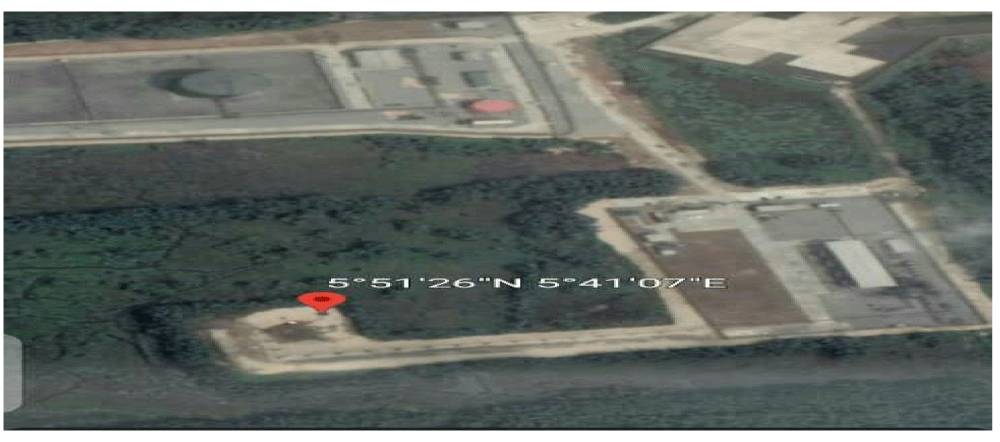
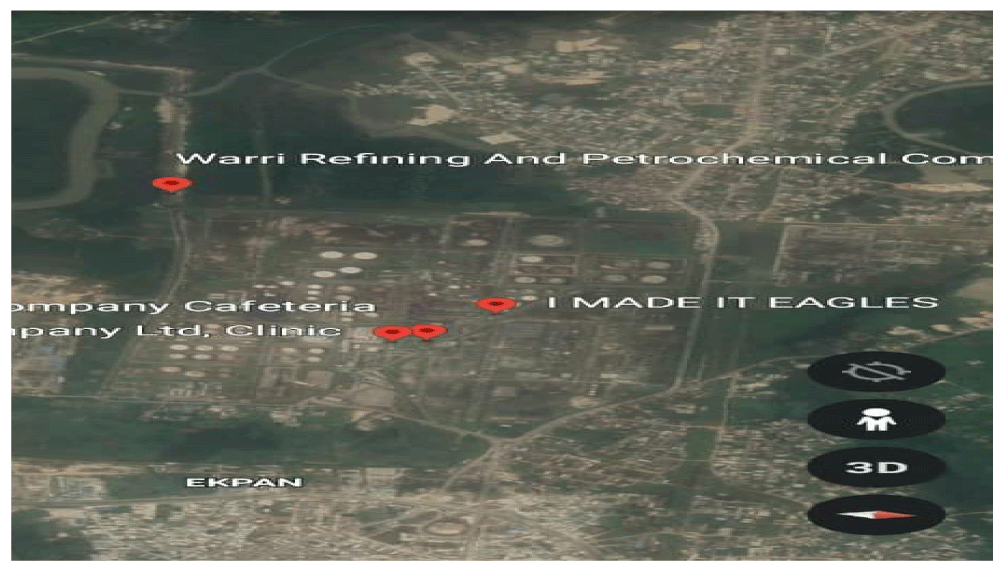
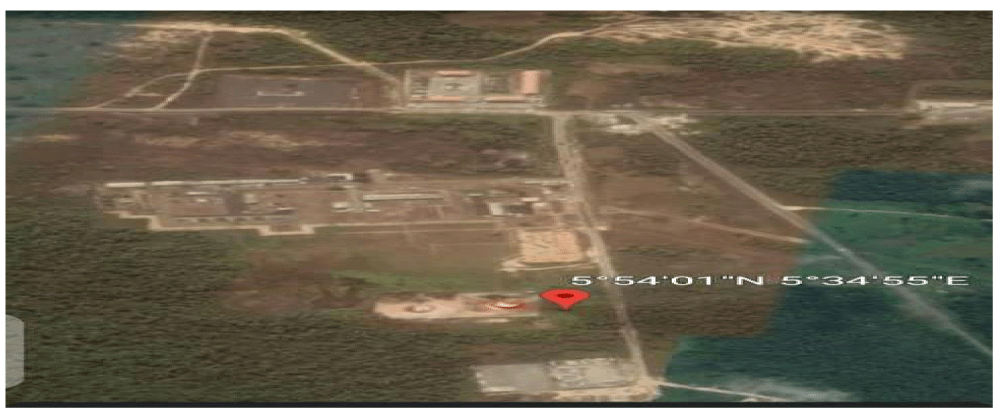
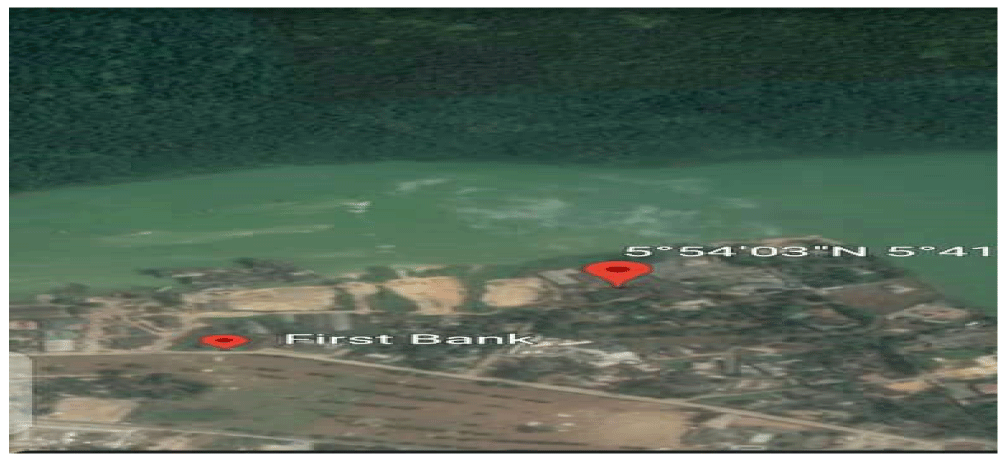
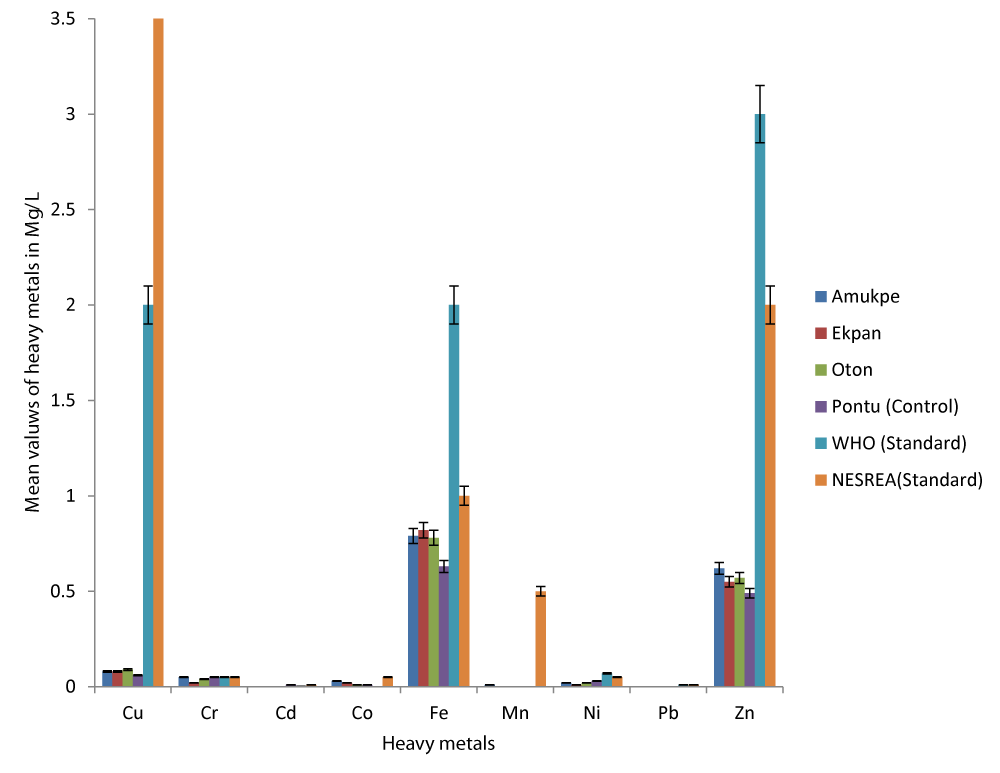

 Save to Mendeley
Save to Mendeley
